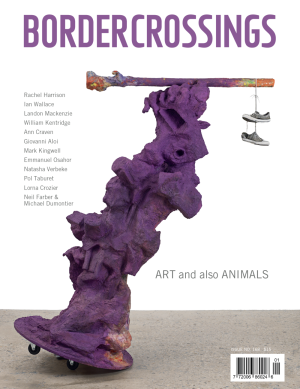“The Bedside Book of Birds: An Avian Miscellany” by Graeme Gibson
Graeme Gibson’s The Bedside Book of Birds is an elegant and beautiful book. It is a collection of works of art depicting birds and excerpts from letters, stories, essays, poems, legends, folk tales and myths that deal with birds. The book is eclectic in the best sense of the word, drawing from a huge and diverse set of sources. It is also idiosyncratic, and its idiosyncrasy is part of what makes it marvellous. I’ve always felt that it isn’t the plots or even the language of literature that gives it power and draws us to it, but the quality of the mind behind the work.
The Bedside Book of Birds is one of those works in which you sense a keen imagination and a vital intelligence working below the surface of the text. If you were to go out birding in exotic locales, you would want to have Graeme Gibson for your guide. You would want to listen to him tell the stories of birds and their habits.
I began watching birds many years ago when the practice was called “birdwatching,” and I’m still a little uneasy about the shift to “birders” who go “birding.” There is something a bit too rigidly scientific in this practice. And I don’t like the way the familiar names of birds get changed by some obscure body that exercises an academy-like purist authority over language. I began watching Myrtle Warblers, and even if every field guide is cowered into renaming them Northern Warblers, I will continue to name them and speak to them in the vernacular.
And that’s why I like Graeme Gibson’s book so much. It contains no photographs, but only stunningly beautiful paintings and drawings, many of them very old. It does not name the parts of birds, but evokes them in elegant poetry and prose. And the authors he chooses to represent are among my own most favourite writers.
Gibson introduces each section of the book in his own voice, and he acts as a kind of master of ceremonies. The book is divided into nine sections, each with an impressionistic title: “Oh, the Birds … ,” Death Comes as a Rooster, A Bird in the House, Then the Birds Attacked, titles that do more to perplex than to explain.
The first of the pieces Gibson includes in his book is an excerpt from Peter Matthiessen’s splendid book The Wind Birds. I first read the book in serial form in the New Yorker magazine, and it has remained one of my favourite works for over 40 years. It is so seductive that if you give it as a present, you should include a caution that the receiver who reads it is in serious danger of being absorbed into the community of bird lovers and led down forest paths, with funny hats and binoculars.
The final piece is a poem by Seigfried Sassoon, “Everyone Sang,” in which the song of birds becomes a metaphor for freedom, after the horrors of the Great War. A perfect ending.
Between beginning and ending, we visit with such writers as Saki, Charles Darwin, Flann O’Brien, James Reaney, Ovid, Herman Melville, P.K. Page, Ted Hughes, Bruce Chatwin and the amazing Polish writer Bruno Schulz, killed by the Nazis at the beginning of World War II.
Schulz was so gifted a stylist that even in translation, his works are brilliant, and the section that Gibson has chosen, in which the narrator describes his mad father’s obsession with birds, is wonderful writing.
Flann O’Brien has an underground coterie of fans who memorize entire sections of his work and quote them aloud to like-minded fanatics in dark bars. They will love this work. Gibson’s own sections are as beautifully written as any of his authors. His fans will remember some stunning passages from his brilliant novel Perpetual Motion, in which the passing of the passenger pigeons is brilliantly recorded.
The paintings and drawings in the book are taken from dozens of different cultures, but what they share is a passionate desire to represent the creatures that have caught our imaginations over the centuries. Owls and ravens predominate, and that’s appropriate. They are powerful icons in every culture. The mythic and legendary birds that help organize legends and myths are here in abundance.
And in many ways, this book is about abundance. Gibson subtitles the book An Avian Miscellany, and it is designed as a book to be dipped into again and again. It is, however, so compelling that I gobbled the entire thing at a sitting. I suppose I will come back to it again and again. And, of course, I hope you will go out and buy it. You can’t go wrong. ■
The Bedside Book of Birds: An Avian Miscellany by Graeme Gibson, Doubleday, 2005. Hardcover, 384 pp, $39.95.
David Arnason is a Winnipeg writer who teaches at the University of Manitoba. His latest book is The Imagined City, a Literary History of Winnipeg, co-edited with Mhari Mackintosh.

